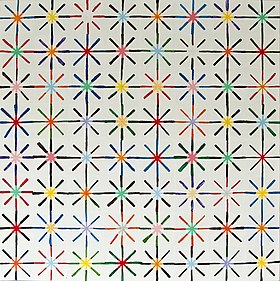
The Ehrenstein illusion is an optical illusion of brightness or color perception. The visual phenomena was studied by the German psychologist Walter H. Ehrenstein (1899–1961) who originally wanted to modify the theory behind the Hermann grid illusion. In the discovery of the optical illusion, Ehrenstein found that grating patterns of straight lines that stop at a certain point appear to have a brighter centre, compared to the background.
Ehrenstein published his book Modifications of the Brightness Phenomenon of L. Hermann to disprove Hermann's theory. He argued that these illusions were not caused by a contrast effect, but rather a brightness effect that needed to be further explored.